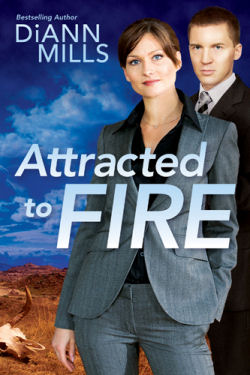
DiAnn Mills believes her readers should “Expect an Adventure.” She is a fiction writer who combines an adventuresome spirit with unforgettable characters to create action-packed novels. Her books have won many awards through American Christian Fiction Writers, and she is the recipient of the Inspirational Reader’s Choice award for 2005, 2007, and 2010. She was a Christy Award finalist in 2008 and a Christy winner in 2010. DiAnn is a founding board member for American Christian Fiction Writers, a member of Inspirational Writers Alive, Advanced Writers and Speakers Association, and is the Craftsman Mentor for the Christian Writer’s Guild. She speaks to various groups and teaches writing workshops. DiAnn and her husband live in Houston, Texas. Visit her website at: www.diannmills.com or find her on Facebook at http://www.facebook.com/diannmills |
|
DiAnn DirectPoint of View |
|
|
Which character sees and internalizes every aspect of the scene? Have you ever been asked those questions? Critique partners, agents, editors, and readers demand to know the scene’s point-of-view (POV) character right from the first sentence. We writers scratch our heads and study the proposed scene’s conflict and stakes. How do we choose POV? Are there guidelines? Does it really matter? The POV does matter. The choice presents challenges: which character, how many, and an opportunity to tell our stories from a unique perspective. A writer has two aspects of POV to determine before beginning to write. The first consideration is to determine first, third, or omniscient POV. Second person POV is not recommended. In this viewpoint, the writer creates a character then invites the reader to be the “you.” This works fine for cookbooks but tends to fall in fiction. First Person POV Everything in first person POV is told from the viewpoint of “I.” The advantage to this is intimacy. It’s easy to believe what the character says, thinks, does, and experiences—similar to watching TV news and hearing a firsthand report. First person POV is frequently used in literary and mainstream novels. To the reader, the writer is the POV character and takes on a dual role of actor and writer. The danger in this technique is interjecting the writer’s thoughts and feelings instead of using the character’s traits. Another problem is describing the character without sounding self-centered or using cliché methods. A writer can use a single first person POV or multiples. In using multiple POVs, identify the POV character’s name before the scene or chapter begins. Third Person POV In third person POV, first person is exchanged for “he” or “she” or the POV character’s name. This is the most popular. The writer uses the character to project feeling through sensory perception to carry out a scene. The reader easily moves into the shoes of the character, thus experiencing every action and reaction. The writer can choose to write distant, close, or intimate third person POV, according to the goal of the scene and the character’s traits. The writer can use a single third person POV or multiples. In using multiple POVs, identify the POV character in the first sentence of the new scene or chapter. Omniscient POV Omniscient POV means the writer is in several characters’ heads at the same time. The problem is the reader finds it difficult to form a bond with a single character. The story may seem distant and disjointed, and the reader may not understand why. Omniscient POV leaves little room for the reader to be creative or find a wisp of mystery in the story. This was a common technique in classic literature, but today’s readers prefer to be part of the adventure by sharing the character’s experiences. The second aspect of POV is how many viewpoints are needed to accomplish the theme and purpose of the novel. Every time a reader is forced to change POV, the readers must adjust. How many adjustments are necessary to effectively tell the story? |
How does the setting affect the POV? When the choice of POV centers on what character has the most to lose, then the setting may be a deciding point, especially if the setting is antagonistic to the a character. Multiple POVs raise a critical question to the writer’s plot and structure. How does the writer choose the correct character viewpoint for the scene? The writer poses two questions to correctly assign POV: (1) Who has the most to lose in the scene (higher stakes)? (2) What role will this character play at the climax? Sometimes a story calls for an unreliable POV. This is a character who is biased, maybe lying, mentally or emotionally unstable, or too close to a situation. This viewpoint can be effective in a romance or a suspense novel in which a villain is portrayed. Remember, a character who has an unreliable POV acts and responds with the truth as he or she sees it. As your mind swirls with how you can use this technique, remember that if your first person POV character is unreliable all the way through your story, such as in a villain, your reader has to connect with the character early on. Certain challenges arise in choosing POV when the writer considers unusual character situations. Some of these are: 1.
Children: Make sure the
child’s language is accurate. Other considerations are the child’s
emotional, mental, spiritual, physical attributes.
2. A character who is hearing impaired. 3. A character who is speech impaired. 4. A character who has spent his/her life in seclusion. Mastering Point of View by Sherri Szeman is an excellent resource to help the writer with POV. Sol Stein’s How to Grow a Novel and Donald Maass’s Writing the Breakout Novel offer instruction and examples in how to write effective POV. POV affects the choice of language, setting, and atmosphere of your novel. Remember to stay in one POV per scene so the reader stays engaged. That character is the star, and the writer wants to keep her on stage for the full dramatic effect. When you choose the POV of your novel and the character(s) who will change and grow while solving problems, you set the stage for your novel. Go ahead. Make the choice. 
|
|
|
|
|
|
|









 Whose
head am I in?
Whose
head am I in?